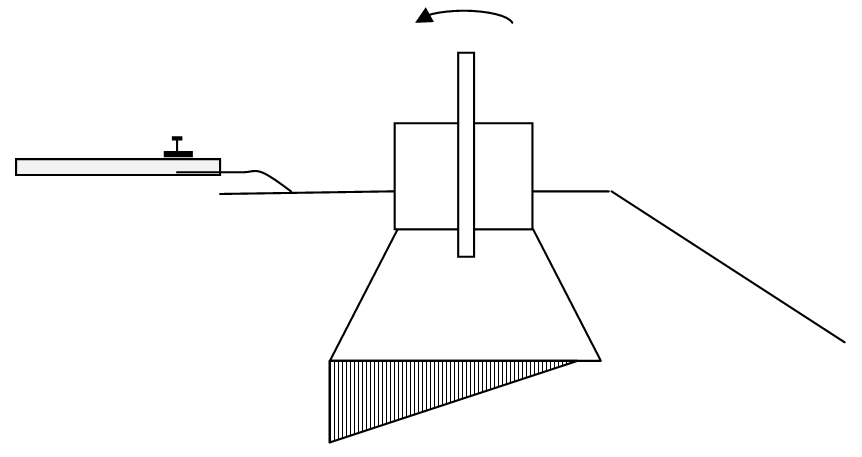Over Head Equipment – Foundation
Foundation should be capable to support the vertical load of mast, bending moment due to static and dynamic load of OHE. Foundation design mainly depends on Soil and conditions prevailing at the location. There are certain masts at which OHE contact wire is terminated thus requiring anchor mast to balance the anchoring load.
Types of Foundations
Foundations are designed on the basis of bearing capacity of parent ground soil. Bearing capacity means the capacity of the soil to exert pressure on the foundation to hold it in position. There are two types of soil namely normal and black cotton soil. Black cotton soil foundation needs special precaution.
Normal Soil: There are three types of foundation in this category
- Side Bearing
- Side Gravity
- Pure Gravity
Special –Black Cotton Soil: Black cotton soil swells during rainy season and cracks in summer due to shrinkage. Swelling creates upwards pressure on the structure and shrinkage creates downward pull. It results into cracks in foundations wall and roof. Hence foundation in black cotton soil needs special care.
Side Bearing Foundation
Side bearing are generally provided where the earth is normal and fully consolidated. The entire load on the foundation i.e. OHE and wind loads are transferred to the sides as well as the base of the foundation. Bearing pressure is more than 10000kgf/m2. Bending moment is resisted by base as well as sides. Shoulder width ≥ 0.3 & 0.5m for BM away and towards the track respectively. The depth of the foundation in these cases should be such that the top of the foundation is not exposed more than 1meter. Variation of the pressure on the sides and base is assumed to be linear and its maximum not exceeding the bearing capacity of the soil.
There are two types of side bearing foundation i.e. parallelepiped and cylindrical type. Cylindrical type foundation will need less concrete, but there is difficulty in excavation as mechanically operated drills or augers are required.
Side Gravity Foundation
When the width of the embankment is small such that the clear cover on the slope is not sufficient i.e. less than 0.3m, side bearing pressure may not be adequate for which side gravity foundation is used. It means, to increase the base on the side away from the track, so that loss of side bearing is compensated by the extended base.
Pure Gravity Foundation
This foundation is adopted where the soil is loose and unable to offer any resistance from the sides. The volume of concrete for this type of foundation is high. Foundation block is made heavy and base is spread on both sides such that the resultant load due to all vertical loads and bending moments intersects the foundation base within middle third of the base width. Reaction of soil from side is negligible and it is only from reaction from the bottom is only taken
Special Foundation for Black Cotton Soil
Black cotton soil is most unpredictable soil. The main characteristics of this type of soil are that when it is wet, it swells and exerts pressure of about 16500kg/m2 and when dry, cracks are developed into the soil upto the depth of 2 to 2.5 m below the ground level. There are two categories of foundation in which the soil remains wet throughout the season or remains wet during rainy and dry during in the rest of the season. The soil which remains wet through out the season, adopts pure gravity type foundations with the safe bearing pressure of 8250 kg/m2.
The foundation is designed for a safe bearing pressure of 16500kg/m. The depth of the foundation is kept at 2.8m below which the movement of soil is considered to be negligible. In consideration of the force produced due to swelling of the soil, super incumbent cone of the earth making angle of 30 degree with the vertical is considered to resist this uplift force. For this purpose, base of the foundation is stepped to make sure the proper action of the super incumbent cone of earth in overcoming the uplift. It is important that the earth around the foundation remains original and not to be filled up as shown in the diagram








Please give the details in Hindi language
nice
Please give the details in Hindi language
turn out
What are parameters regarding holes drilled on T150 mast to hold a 10KVA PMAT
Which type of scroll used in which type of foundation and what are the scroll volumes used in b type of foundation
U have to use the scrol is which in your drawing. Normally 200mm dia & 1.6 mtr height scroll is used.
Please give more details about foundation i.e portal, B-type, BG, NG -type foundation and which foundation is suitable for which soil. Thank u for these info & its helpful.
Sir please send me rdso B6 foundation drawing.
Please give me the foundation details which is used in hard rock in ohe?
Me want to total type of foundation chart pdf
good information for electrical trd staff
Please share the details about auxiliary transformer foundation or any regarding RDSO drawing.